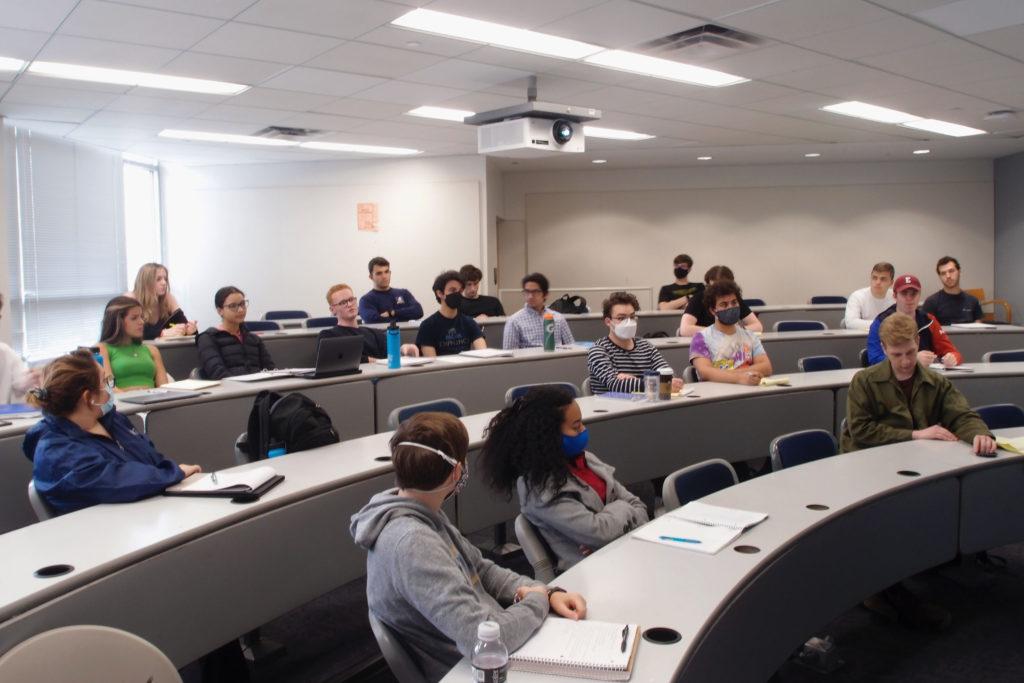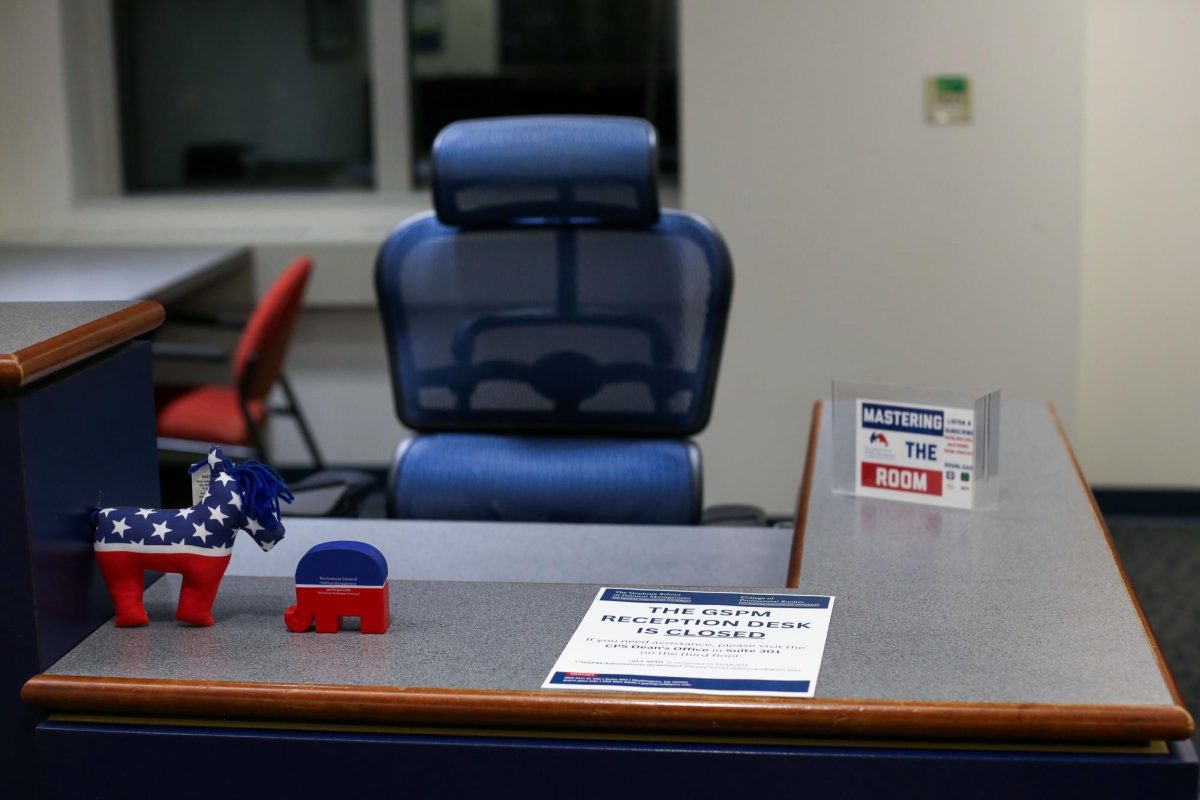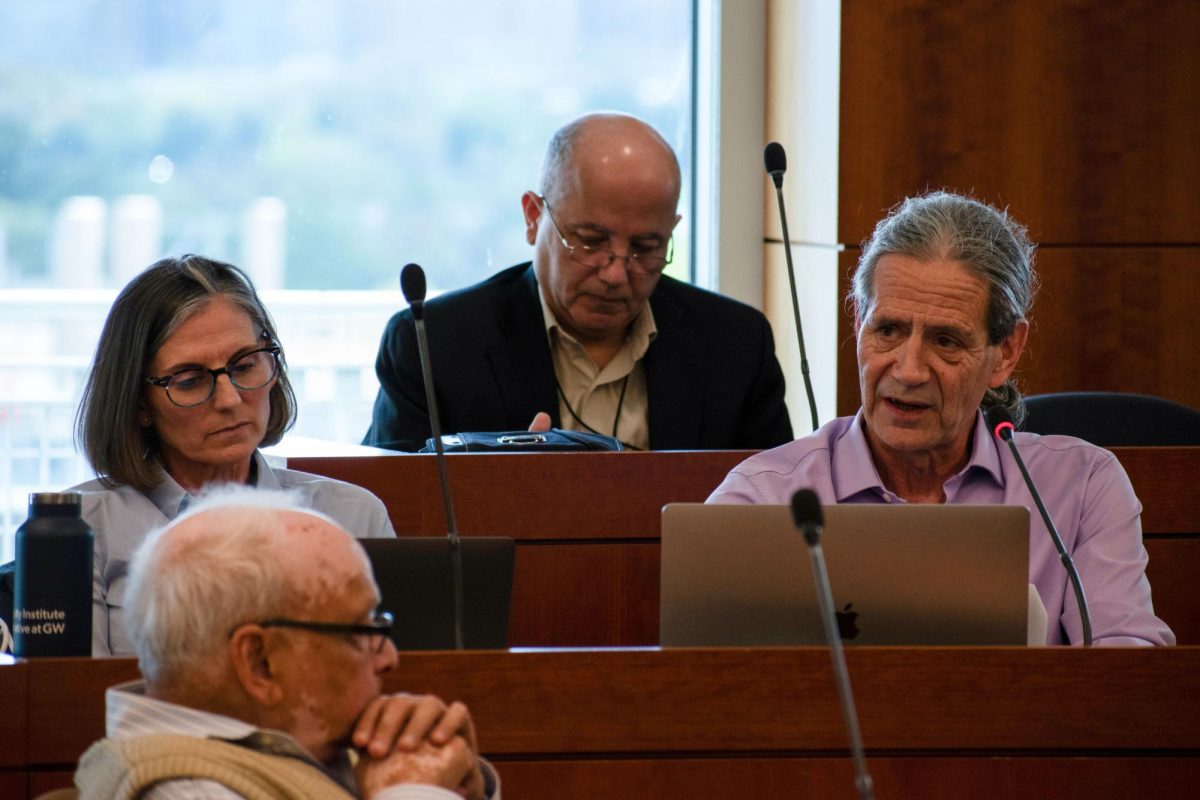Monday marks the end of GW’s classroom mask mandate and a shift away from a policy that has spanned the duration of COVID-19, but faculty and students said the requirement largely went unenforced months before its removal.
More than 20 faculty members and students said officials’ decision to end the mask mandate was “expected” in classrooms where students gradually drifted away from daily masking routines and professors softened their enforcement of the policy. Leading up to the start of February, GW was the only “large,” “urban” university to still require students to wear masks within instructional settings, according to a Hatchet analysis of policies at nearly 230 higher education institutions.
The mask mandate now only applies to University-operated health care facilities and requires people to wear a mask for 10 days following a positive COVID test. Classrooms, health care facilities and GW-operated transportation were the exceptions to GW’s decision to end its mask mandate that applied to all indoor spaces in September.
The University lifted the indoor mask mandate for about a week last April before reinstating it after an uptick in the University’s positivity rate. Students were required to wear masks on campus as of fall 2020 when the first 500 residents could move back into University residence halls.
University spokesperson Julia Metjian said the Medical Advisory Group, which advises officials on the University’s COVID policies, recommended dropping the mask mandate to the administration. She said officials decided to drop the classroom mask mandate because of the GW community’s high vaccination rate and the low rate of COVID-related illness or hospitalizations in D.C. and on campus.
“Individuals may choose whether to wear a mask based on a variety of reasons,” she said in an email. “We ask that you respect the personal decisions of others.”
She said using masks on campus is now optional but “strongly encouraged.”
Metjian declined to say what policy officials will implement to accommodate faculty who wish to keep the mandate in their classrooms, but Disability Support Services and the Office of Equal Employment Opportunity and Access will work to provide accommodations to individuals who request them.
Immunocompromised students raised concerns last year that officials’ decision to end the University’s biweekly COVID testing requirement last June could place them at a disproportionate risk of contracting severe cases of COVID.
More than 10 faculty members said the decision to end the mask mandate in classrooms comes at the right time, as a large number of their students already backed away from mask-wearing in their classes earlier this academic year. But faculty were split over whether or not they would continue to wear a mask in class, with some saying they would continue masking due to their personal or familial health concerns.
Kathryn Kleppinger, an associate professor of international affairs and French and francophone studies, said about half of her students stopped wearing masks to class this spring even as the University’s mask mandate remained in place. She said she stopped enforcing the mandate in her class this semester because of the lack of student compliance with the mandate.
“We want to follow the rules, and the rules do state that masks are required in the classroom and instructional spaces,” Kleppinger said. “If it had been maybe one or two students, I might have asked them, but since it was half of the class, I kind of just gave up.”
Kleppinger said she will continue to wear a mask while teaching because she does not want to risk spreading COVID to her children at home.
“I have two kids now, so my risk profile has changed,” Kleppinger said. “I think that it’s more likely to come from somewhere else, but if I can do something to minimize it, then why not?”
Kleppinger said officials did not communicate the decision to drop the University’s mask mandate to faculty members before announcing the end of the mandate to the GW community via email earlier this month.
“For the most part, they have not exactly consulted us on the COVID policies,” Kleppinger said. “But for the most part, I’m okay with that because I’ve always agreed with what they’ve done.”
Roberto Samaniego, a professor of economics, said “almost nobody” has been wearing a mask in his 200 to 250-person economics class this semester. He said there is “no point” in keeping the mask mandate if just a few people follow it.
“My concern isn’t about the mandates because, again, almost no one was following it anyway, so the mandate itself isn’t the issue,” he said. “It’s just the fact that if there is any health concern, it would be due to the fact that no one is following any sort of mask rules.”
Samaniego said he will continue to wear a mask when he is not feeling well or if he is in a crowded setting on or off campus as a “precaution” against spreading COVID to his family members. He said officials will likely not allow faculty to continue a mask mandate in their classes because it would be difficult to enforce on an individual basis.
“One obviously has to balance what the faculty feel with what the students feel,” Samaniego said. “Because I personally think that wearing a mask is not a particularly great inconvenience, and I also know people who somehow find them terribly uncomfortable and can’t stand them.”
Hugh Agnew, a professor of history and international affairs, said he will continue to wear a mask in the classroom or in other group settings on campus because he is in an age bracket that puts him at an increased risk.
People between the ages of 65 to 74 are 4.9 times more at risk for COVID hospitalization than people between the ages of 18 to 29, according to the Centers for Disease Control and Prevention. People between the ages of 75 to 84 are 8.9 times more at risk, and people above the age of 85 are 15 times more at risk, according to the CDC.
Agnew said he will “encourage” his students to continue wearing masks in his class, saying they consistently helped him not catch a cold or contract COVID throughout the pandemic.
“It’s not my position to make a rule for the whole University, but I’m certainly going to encourage my students to continue to wear masks in any situation where it makes sense to them,” he said.
More than 10 students said they feel “comfortable” with the classroom mask mandate ending as its classroom enforcement has remained low throughout the academic year.
Jovanna Abdou, a sophomore majoring in art history and history, said she supports the end of the mask mandate after it endured through the pandemic as well as officials’ decision to continue recommending mask-wearing within the GW community.
“Having that choice is really important now to get us just back into the social experience of being at college,” she said.
Megan Williams, a first-year graduate student in the anthropology master’s program, said she is “happy” about the classroom mask mandate ending but will likely still carry a mask as a precautionary measure against COVID.
“Overall, I’m kind of glad, but I also feel like I’m saying that selfishly because I feel like, at this point, we’re kind of tired of wearing them,” she said. “Even though I’m really gung ho about not getting it because it’s been, what, three years now? I still haven’t gotten COVID.”
Eóighan Noonan and Caitlin Kitson contributed reporting.











